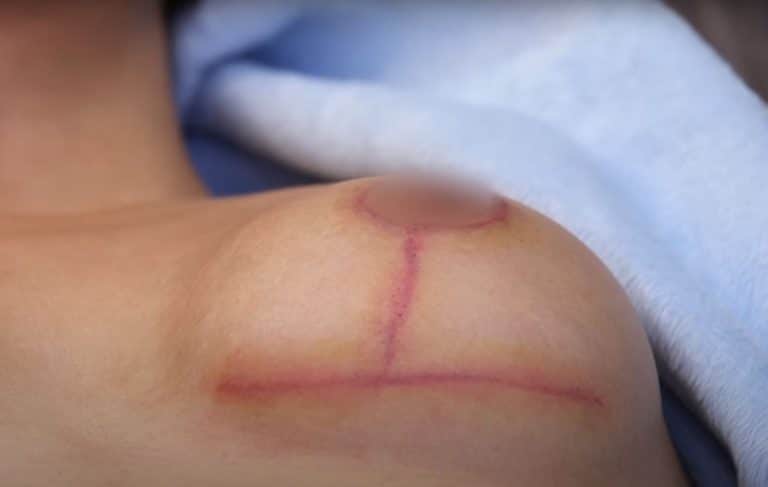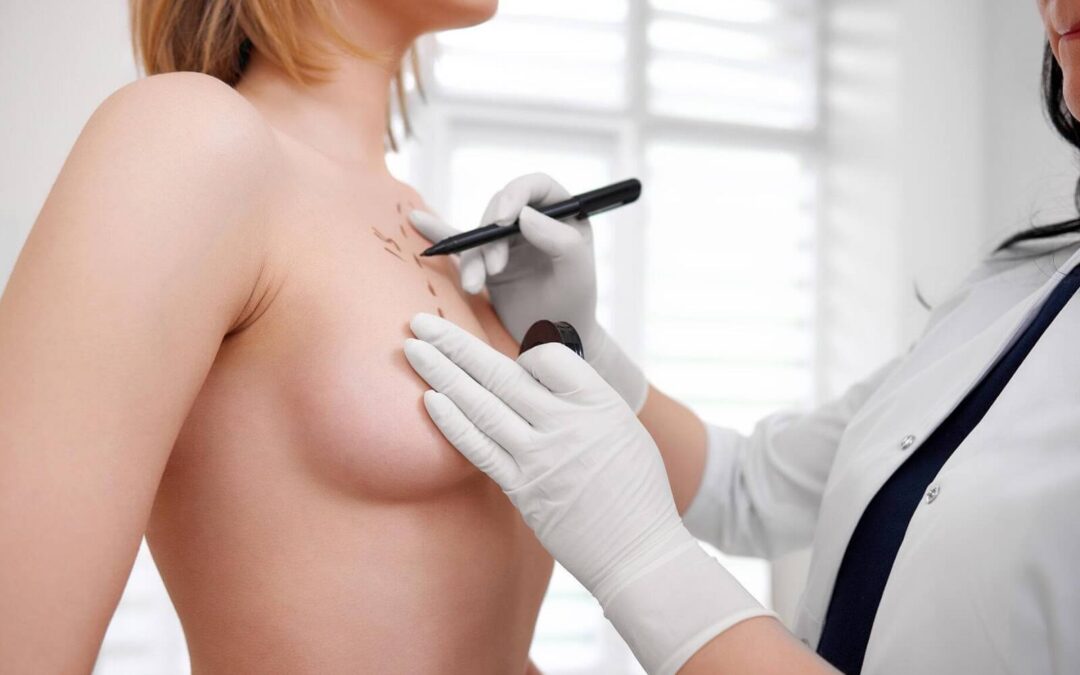Breast reduction surgery, a procedure designed to alleviate discomfort from overly large breasts, has become a beacon of hope for many seeking relief and improved quality of life. This surgical intervention not only aims to reduce physical pain but also enhances body image and boosts self-confidence. By carefully removing excess breast tissue, fat, and skin, surgeons tailor the breast size to fit the patient’s body frame more comfortably. Understanding the process, benefits, and considerations is crucial for those contemplating this transformative step towards personal comfort and well-being.
Understanding the Breast Reduction Procedure
Surgical Steps
Breast reduction is a surgical process. It involves removing excess breast fat, tissue, and skin. This results in smaller, lighter breasts.
The surgery begins with anesthesia for comfort. Incisions are then made following pre-determined patterns. The pattern depends on individual needs and goals.
Excess fat and glandular tissue get removed next. The surgeon reshapes the remaining breast tissue to achieve desired size and contour.
Finally, incisions are closed with sutures or surgical tape. The aim is to minimize visible scarring.
Recovery Process
Recovery varies from person to person but follows a general timeline.
-
Immediately after surgery: Patients wear a support bra or garment.
-
First few days: Pain medication helps manage discomfort.
-
One to two weeks: Most return to work if not physically demanding jobs.
-
Several weeks: Swelling decreases; scars begin healing.
During recovery, follow-up appointments monitor healing progress. Patients receive specific instructions for care at home.
Potential Risks
All surgeries carry risks which should be understood beforehand.
-
Infection
-
Scarring
-
Changes in nipple or breast sensation
These risks can be minimized by choosing an experienced surgeon and following post-operative care instructions carefully.
Who Is a Candidate for Breast Reduction Surgery
Physical Discomfort
Many people suffer from physical discomfort due to large breasts. This includes back pain, shoulder pain, and neck pain. They might also experience skin irritation beneath the breast fold.
Breast reduction surgery can offer relief. It reduces the weight of the breasts, easing strain on the body. Many patients report significant improvements in their symptoms after surgery.
Lifestyle Limitations
Large breasts often limit physical activity. Running or jumping can be painful or awkward. This impacts overall fitness and quality of life.
After breast reduction, many find it easier to engage in sports and exercise. Their range of motion improves, making activities more enjoyable.
Emotional Distress
The emotional impact of large breasts shouldn’t be overlooked. Many feel self-conscious or experience unwanted attention because of their size.
Surgery can boost self-confidence and comfort in one’s own body. Patients often report feeling more at ease socially post-surgery.
Health Considerations
Not everyone is a good candidate for breast reduction surgery.
-
Those with certain health conditions may face higher risks.
-
Smokers are encouraged to quit before undergoing surgery to improve healing.
A thorough evaluation by a surgeon is crucial before deciding on this procedure.
Breast Reduction Recovery Phases and Timelines
Initial Days
After surgery, patients feel tired. They need rest. Pain is common but manageable with medication.
Doctors apply bandages and a special bra supports the chest. Swelling and bruising appear but will reduce over time. Patients must avoid heavy lifting and strenuous activities.
Weeks Following
The first few weeks are crucial for healing.
Patients see doctors for follow-up visits to check progress. Stitches may be removed during these appointments if they haven’t dissolved on their own.
Activities can slowly resume as comfort allows, but no heavy exercise yet. The appearance of scars begins to improve though they may still be noticeable.
Long-Term Healing
Full recovery takes months.
Scars continue to fade up to a year after surgery, becoming less visible over time. Regular check-ups with the surgeon ensure proper healing and address any concerns.
Patients often experience relief from previous symptoms like back pain almost immediately after surgery, improving quality of life significantly.
Managing Pain and Discomfort After Surgery
Medication Strategy
After a breast reduction, managing pain is crucial. Doctors often prescribe pain relievers. These can range from over-the-counter options to stronger prescriptions.
Patients should follow their doctor’s advice closely. Taking medication as prescribed prevents severe discomfort. It’s important not to wait for the pain to become unbearable before taking medicine.
Rest and Positioning
Rest plays a key role in recovery. The body heals faster when it’s at rest. Patients should ensure they get plenty of sleep.
Sleeping in the right position also helps manage pain after breast reduction surgery. Sleeping on your back, slightly elevated, reduces swelling and discomfort.

Cold Compresses and Gentle Movements
Applying cold compresses can reduce swelling and numb the area, providing relief from pain after surgery.
Gentle movements help too but avoid strenuous activities or lifting heavy objects until approved by your doctor.
Follow-Up Care
Regular follow-up appointments are essential. They allow doctors to monitor healing progress.
During these visits, any concerns about pain management can be addressed directly with healthcare professionals.
Home Care and Exercise After Breast Reduction
Wound Care
Proper wound care is crucial after breast reduction surgery. Keep the surgical area clean to prevent infection. Change dressings as instructed by your surgeon.
Avoid applying pressure or sleeping on your stomach. This can harm the healing process. Wear a supportive bra day and night for at least a month.
Activity Limitations
After surgery, limit physical activity. Here’s what you should avoid:
-
Lifting heavy objects
-
Strenuous exercise
-
Any movement that strains the chest
Start with light activities like walking. This helps blood circulation and reduces swelling.
Gradually increase activity level based on comfort and doctor’s advice.
Gentle Exercises
Introduce gentle exercises after getting approval from your doctor. Focus on mobility rather than intensity at first.
Try arm lifts or shoulder rolls to maintain flexibility without straining your chest area.
Include breathing exercises to promote relaxation and healing.
Remember, listen to your body and stop if you feel pain or discomfort.
Dressing, Scar Care, and Follow-Up Appointments
Proper Dressing
After a breast reduction surgery, wearing the right kind of dressing is crucial. Your surgeon will likely recommend a special surgical bra. This bra provides support and helps in healing.
You should wear it as directed. It not only supports your breasts but also reduces swelling. Change dressings according to your doctor’s instructions. Keeping the area clean prevents infection.
Scar Care
Scars are a common concern after breast reduction. However, proper care can minimize their appearance.
Use silicone sheets or scar gels if recommended by your surgeon. These products improve scar healing. Keep scars out of the sun for at least one year post-surgery because UV rays can darken them. Moisturize the area around scars gently but don’t apply pressure on them directly until fully healed.
Follow-Up Appointments
Attending follow-up appointments is key to recovery after breast reduction surgery.
During these visits, your surgeon checks on healing progress. They provide guidance on physical activities and address any concerns you might have. Follow-ups ensure that complications are caught early and dealt with promptly.
Impact on Nipple Sensation and Risks Associated with Surgery
Nipple Sensation
After breast reduction, changes in nipple sensation can occur. For some, this means increased sensitivity. Others might experience reduced feeling or numbness. This change is usually temporary but can be permanent for a few.
Patients often report a range of experiences. Some regain full sensation within months. Others notice gradual improvements over a year.
Surgical Risks
Breast reduction surgery, like any operation, carries risks. Infection and bleeding are two primary concerns immediately following the procedure.
Other potential risks include:
-
Scarring that may be more extensive than expected.
-
Asymmetry between breasts.
-
Difficulty breastfeeding in the future.
To minimize these risks:
-
Choose an experienced surgeon.
-
Follow all pre and post-operative instructions carefully.
Understanding these aspects is crucial for anyone considering breast reduction surgery. While dressing, scar care, and follow-up appointments play significant roles in recovery, being aware of possible changes to nipple sensation and surgical risks helps set realistic expectations for the outcome.
Possibility of Breast Regrowth After Reduction
Hormonal Changes
Hormonal fluctuations significantly impact breast size. Pregnancy, menopause, and puberty can cause changes.
After a breast reduction, hormones might still lead to regrowth. For example, during pregnancy or menopause, the breasts may increase in size again. This is due to the body’s natural response to hormonal changes.
Weight Gain
Gaining weight can also affect breast size after surgery. Fat tissues in the breasts might expand with overall weight gain.
Maintaining a stable weight is crucial for preserving surgery results. A balanced diet and regular exercise help prevent unwanted changes.
Age Factor
Younger patients may experience regrowth more often than older ones. This happens because their bodies are still developing or responding to hormones differently.
Choosing the right time for surgery is important. It helps ensure long-lasting results.
Genetic Predisposition
Some people have genes that influence their breast size more significantly. Even after reduction, these genetic factors can cause regrowth over time.
Understanding family history helps set realistic expectations about surgical outcomes.
Final Remarks
Breast reduction surgery offers significant physical and psychological benefits for those experiencing discomfort or health issues due to large breasts. The procedure, while complex, can lead to improved posture, relief from pain, and a more proportionate body shape. Recovery requires patience and diligent follow-up care, including managing pain, adhering to exercise recommendations, and attending all post-operative appointments. Potential risks and the possibility of breast regrowth highlight the importance of thorough consultation with a qualified surgeon before proceeding.
Individuals considering this surgery should weigh the benefits against the potential risks and recovery challenges. It’s crucial to set realistic expectations and understand that results vary based on individual circumstances. For those who decide to proceed, breast reduction can be a life-changing step towards comfort and self-confidence. Those interested in exploring this option should seek advice from medical professionals specializing in breast reduction to ensure the best possible outcomes.
Frequently Asked Questions
Who is a good candidate for breast reduction surgery?
Individuals experiencing physical discomfort or self-consciousness due to large breasts may be ideal candidates. A consultation with a healthcare provider can confirm eligibility.
What does the breast reduction procedure involve?
The procedure typically involves removing excess breast tissue, fat, and skin to achieve a smaller, more proportionate breast size.
How long is the recovery period after breast reduction surgery?
Recovery varies but generally includes several weeks of reduced activity. Full recovery can take up to six months, depending on individual healing processes.
How can pain and discomfort be managed post-surgery?
Pain management usually involves prescribed medications, ice packs, rest, and wearing a supportive surgical bra.
What home care is needed after breast reduction?
Post-operative home care includes wound care, avoiding strenuous activities, and attending follow-up appointments as advised by your surgeon.
Will I have scars after breast reduction surgery?
Scarring is inevitable but typically fades over time. Following your surgeon’s scar care instructions can help minimize their appearance.
Is there a risk of losing nipple sensation after surgery?
Changes in nipple sensation are possible but often temporary. Most patients regain normal sensation within several months post-surgery.
Can my breasts regrow after undergoing reduction?
Breast regrowth is rare but possible due to weight gain or hormonal changes. Maintaining a stable weight can help prevent this.





